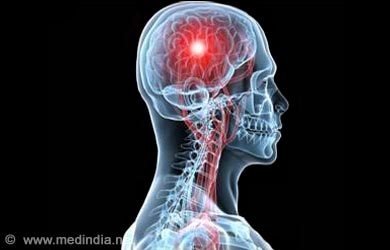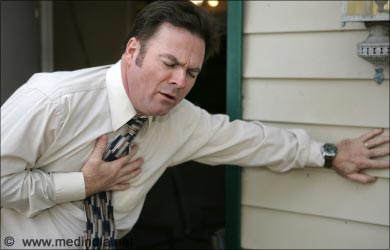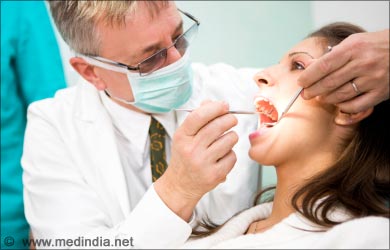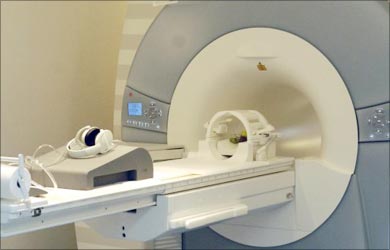- Tuberous Sclerosis - (http://emedicine.medscape.com/article/1177711-overview)
- About Tuberous sclerosis - (http://www.mayoclinic.com/health/tuberous-sclerosis/ds01032/dsection=risk-factors)
- Syed KN. Tuberous Sclerosis. J Pak Med Assoc 2010; 60:8: 683-5.
- Hurst JS, Wilcoski S. Recognizing an Index Case of Tuberous Sclerosis. Am Fam Physician. 2000;61(3):703-708.
About
Tuberous Sclerosis is genetic disorder characterized by growth of benign tumors in many parts of the body, including brain, skin, lungs, kidney and heart.
Tuberous sclerosis is a rare genetic disorder caused either by mutation or inherited as an autosomal dominant trait. The disease is characterized by growth of multiple benign tumors in many parts of the body, such as brain, skin, lungs, kidney and heart. These tumors may calcify and become hard and sclerotic with age.

Tuberous sclerosis affects individuals irrespective of age, sex and gender. Affected individuals especially children experience significant health problems like intellectual disability, seizures, mental retardation, autism or developmental delay. Skin changes are common in these individuals.
Mutations in 2 genes – TSC1 and TSC2 are responsible for the development of tuberous sclerosis. These genes code for two proteins, tuberin and hamartin, respectively, which act as tumor suppressors.
Symptoms and Signs of Tuberous Sclerosis
Skin Manifestations:
Individuals affected with tuberous sclerosis develop characteristic skin lesions:
- Skin lesions may appear as light-colored patches or macules during infancy. They are described as having an ash- leaf or confetti appearance.
- Small reddish nodules may appear on face especially on nose and cheeks after the age of two years. These enlarge and join together to form larger lesions. The condition is referred to as adenoma sebaceum.
- Shagreen spots are thickened yellowish brown raised patches of skin that appear on lower back.
- Flesh-colored flat skin lesions and benign fibrous nodules may arise around the fingernails and beneath nail beds.
Nervous system-related Symptoms:
- Benign brain tumors develop that often result in seizures. In addition, patients may suffer from mental retardation, intellectual disability, delayed speech learning disability and developmental delays. Children affected with tuberous sclerosis may be autistic. The tumors in the brain may obstruct the flow of cerebral spinal fluid in the spaces in the brain, resulting in various symptoms.

Cardiac Symptoms:
Individuals with tuberous sclerosis may develop heart-related symptoms during early infancy. Heart tumors are responsible for the abnormalities like abnormal heart rhythm. The tumors often decrease in size with age.

Lung Symptoms:
Some individuals with tuberous sclerosis may develop benign lung tumors and present with symptoms like shortness of breath, coughing, and difficulty in breathing especially after exertion or exercise. Progression of disease with age may lead to lung failure.
Kidney Symptoms:
Kidney manifestations are the second common clinical feature of tuberous sclerosis. Kidney cysts and tumors affect the normal function of the kidney; if untreated, it could progress to kidney failure. Some patients develop kidney cancer.
Dental Symptoms:
Individuals with tuberous sclerosis may present the dental abnormalities like multiple dental pits and thickenings in the gums. Around 50% of children may show mixed dentition i.e., both milk teeth and permanent teeth are present. Some show the presence of only milk teeth.

Others:
Other manifestations include:
- Patients may develop tumors in the retina of eye, which may cause visual disturbances.
- Radiological studies revealed bone lesions in patients with tuberous sclerosis, which may be asymptomatic.
- Asymptomatic liver cysts and benign tumors of the liver have been reported.
- Abnormal growths and polyps of stomach, intestine and colon may develop.
- Rubbery growth on tongue and gums are reported.
Diagnosis of Tuberous Sclerosis
Tuberous sclerosis is diagnosed based on family history and physical examination.
Laboratory tests and imaging studies are used to confirm the diagnosis.
Laboratory Studies:
Laboratory studies are indicated:
- To identify genetic mutations associated with tuberous sclerosis.
- To monitor treatment with antiseizure medications
- To identify adverse effects of drugs
- To identify underlying kidney or lung disease
Imaging studies:
Imaging studies are used to identify abnormal growths in various parts of the body.
Magnetic resonance imaging (MRI) studies and Computed tomography (CT) are most sensitive screening imaging studies especially for brain tumors. Ultrasound is used to detect kidney lesions.

Echocardiography and Electrocardiography (ECG): These are tests done to check for cardiac structure and function.
Electroencephalography: This test is performed in patients with tuberous sclerosis in whom seizures are suspected.
Treatment of Tuberous Sclerosis
Currently, there is no cure for the disease; however, surgical intervention and symptomatic treatment with antiseizure medications may help affected individuals.
Medication:
- Anticonvulsants are used to treat seizures.

- Everolimus is used to reduce kidney tumors associated with tuberous sclerosis.
Surgical Therapy:
- Surgery is used to remove brain lesions and therefore control seizures.
- Skin lesions are treated with laser therapy, dermabrasion and cautery.
- Large kidney lesions may also require surgical removal
It is necessary to undergo regular dental check up and kidney ultrasounds to detect for new lesions.
Genetic counseling is useful for patients and their families and also helps to diagnose the disease during prenatal period.
Tuberous Sclerosis is a lifelong condition; therefore individuals should be regularly monitored by an experienced physician.





